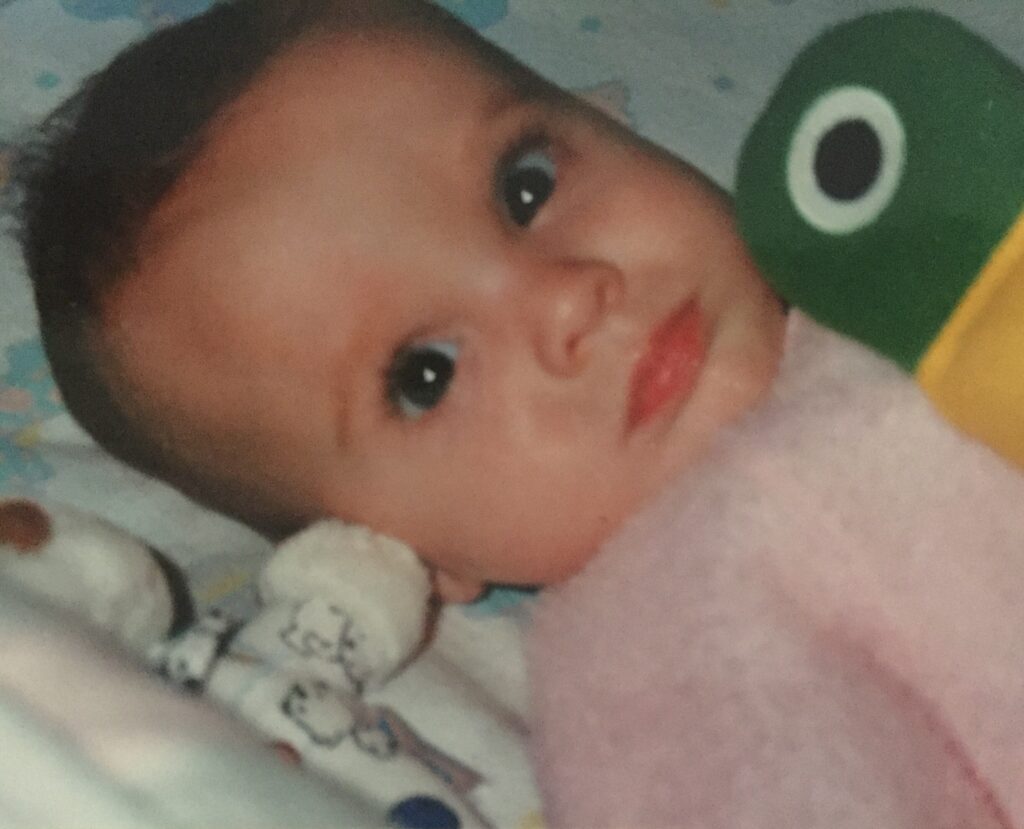From Parent to Patient Advocate: Advocating for the Right Medical Care For Your Child – What Every Parent Needs to Know

Your child has a brain tumor. I can’t remember exactly how or who said those words to my husband and me. Our 7-month old daughter had been admitted into the hospital for tests several days before—failure to thrive was the initial diagnosis. As it turned out, she was a lot sicker than her pediatrician initially thought—and it took about 3 (three) days of testing at a major university hospital to finally hear those fateful words. What happened next remains a blur. I remember the nurse on duty that night, Fay, who took care of our daughter while we processed what we were told, called family to tell them the news, and returned home to share the news with our next door neighbors and pack a few things to take back to the hospital.
Next Steps After the Diagnosis—Bring someone you trust to the first meeting with your doctor(s)
We were told a team of doctors would meet with us the next day to go over the diagnosis, review the next steps, including treatment. Lucky for us (ha—even given such devastating news, it’s hard to believe that choice of terms, but that’s exactly how we felt), my husband worked in pediatric genetics at the same university hospital where our daughter was admitted. His boss, the head of pediatric genetics and a medical doctor with a PhD, offered immediately to come to the team meeting with the doctors the next day—in fact, he practically insisted.
We accepted without hesitation, because, despite feeling overwhelmed, and despite my husband’s expertise in biology and genetics, we knew we were only going to be able to fully process and understand part of what we were about to be told. It turned out to be one of the best decisions we made as we started on a journey that included surgery, a tracheotomy, chemotherapy, and many nights which turned into weeks in pediatric ICU and later discharge to the pediatric general care floor.
Understanding the Diagnosis and Your Treatment Options
Not every diagnosis is going to be as dramatic as the one I just shared. Nonetheless, the important lesson I learned after that experience is that regardless of your age, occupation, and background, it’s critical to bring someone who isn’t emotionally invested in the patient to meetings where the diagnosis and treatment are being discussed. Why? Because, again, you can only process so much—you might be feeling emotional, stressed, overwhelmed or just plain intimidated by the doctor or the diagnosis. And, as the patient, or the caregiver, it can be hard to comprehend or digest everything that the doctor is telling you at that moment.
Find a Patient or Health Advocate—Your “Second Set of Ears”
Our “second set of ears” happened to be a doctor, and it certainly helped to have someone with medical experience listen to such a complicated diagnosis and treatment plan, but it does not have to be a medical professional you bring along to that first meeting. For some, a cool-headed and pragmatic family member might suffice, or a friend or colleague whom you trust will listen to the medical professional, take good notes, and ask the right follow-up questions, in particular if you are at a loss for words or just not able to articulate your needs or questions. Having someone there who can sit with you afterwards, over a cup of coffee or in the quiet of your home, and can review with you what was just said, what questions that you might still have, and what information might still need to be gathered if decisions need to be made is just as important as that initial meeting you both just left.
Learn to Ask for Help—You Don’t Need to Go Through This Alone
One final piece of advice? Don’t be afraid to reach out and ask for help—you’d be surprised how many people are willing and able to help—but may be reluctant to offer for fear that you might need or want privacy. Yes, we were lucky . . . lucky that someone offered to be our advocate . . . and lucky that he was there to ask the deeper questions of the medical team and review the options with us long after the doctors left the room. But this was just the beginning of our medical journey—the start of an almost two-year medical odyssey through ICU, the ER, ENT, PT, OT, and a host of other medical acronyms. But one of the most important lessons we learned, we learned that first day when we got the diagnosis—don’t be afraid to seek out or accept help. Whether it be a friend, colleague, or a professional patient advocate—navigating the medical care system can be overwhelming, scary, or just plain confusing. Ask for help—it’s a decision I guarantee you won’t regret.
Have questions or want to reach the author? Comment below or contact me directly at judi@judiknott.com.
For more information about pediatric brain tumors, visit the American Brain Tumor Association at www.abta.org and The Children’s Brain Tumor Foundation at www.cbtf.org.
In the next installment of From Parent to Patient Advocate—In the Hospital and in Good Hands? Advice to Protect Yourself or a Loved One
